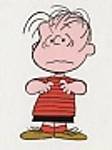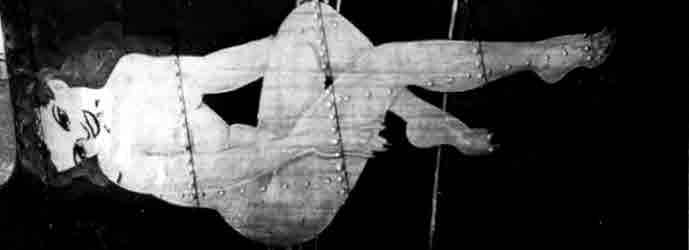What is the best technique to end up with yellow tips on a black propeller. Also how do you make sure they are all exactly the same size ? I use acrylics 1/72 scale for now.
Also how do you display your aircraft model when you make them wheels up ? I am a bit old to have them hanging from the ceiling and the kits today no longer come with the plastic stands like they used do 50 years ago.
Thank you much
Thank you very much
Start Here (for Beginners)
This forum is for younger modelers or people just starting out in the hobby.
This forum is for younger modelers or people just starting out in the hobby.
Hosted by Jim Starkweather
yellow prop how ? and wheels up display
caireparavel

Joined: August 19, 2012
KitMaker: 41 posts
AeroScale: 5 posts

Posted: Wednesday, August 24, 2016 - 02:19 PM UTC

LinusB

Joined: March 21, 2016
KitMaker: 247 posts
AeroScale: 105 posts

Posted: Wednesday, August 24, 2016 - 03:32 PM UTC
I pour a small amount into the dip of the yellow pain lid to the right depth and then just dip the tip of the prop blades in.
Posted: Wednesday, August 24, 2016 - 04:56 PM UTC
Spray the whole prop a primer grey. Then spray the tips yellow. Then mask the tips off and spray the prop color. Use a metal ruler to gauge depth and distance. It's easy when you get the hang of it.

spaarndammer

Joined: January 28, 2007
KitMaker: 1,945 posts
AeroScale: 388 posts

Posted: Wednesday, August 24, 2016 - 05:12 PM UTC
Quoted Text
Spray the whole prop a primer grey. Then spray the tips yellow. Then mask the tips off and spray the prop color. Use a metal ruler to gauge depth and distance. It's easy when you get the hang of it.
That is also how i do it. Fairly easy. Size is a bit of guestimation, but measuring it as Brian writes is more accurate.

Jelger

Jessie_C


Joined: September 03, 2009
KitMaker: 6,965 posts
AeroScale: 6,247 posts

Posted: Wednesday, August 24, 2016 - 09:56 PM UTC
It's not difficult to make your own stands. You'll need a suitably heavy base, plus a rod made of either wood or clear plastic, depending upon your preference. Mount a nice secure block inside the model for the rod to glue into, and then drill the proper sized hole to fix it in place. Many modellers displaying jet models like to mount the rod in the jet exhaust(s).
Kevlar06

Joined: March 15, 2009
KitMaker: 3,670 posts
AeroScale: 833 posts

Posted: Wednesday, August 24, 2016 - 10:20 PM UTC
Well, there is a slightly more complicated method that works quite well and gives a consistent result:
1) primer the prop in either gray or white
2) paint the tips yellow using an airbrush-- don't worry about masking at this time-- let dry
3) using clear decal paper, paint the decal paper the same shade of yellow, seal with a topcoat, let dry
4) mask off the prop tips, airbrush the rest of the prop the chosen prop color (silver or black usually) let dry
5) cut the yellow painted decal paper into thin strips of appropriate size, apply to the prop tips to get a perfect demarcation between the prop color and the yellow, at the perfect distance from the tip. Use Solvaset or another hot decal setting solution to settle the decal.
This method saves tedious masking and paint "creep" under the masked edge. If you use a hot decal solution, the decal will blend perfectly with the tip color. This method also works great with those between-the-war US Navy "yellow wing" aircraft that had blue, yellow and red tips-- giving a perfect result every time, just cut the decals to the appropriate width.
VR Russ
1) primer the prop in either gray or white
2) paint the tips yellow using an airbrush-- don't worry about masking at this time-- let dry
3) using clear decal paper, paint the decal paper the same shade of yellow, seal with a topcoat, let dry
4) mask off the prop tips, airbrush the rest of the prop the chosen prop color (silver or black usually) let dry
5) cut the yellow painted decal paper into thin strips of appropriate size, apply to the prop tips to get a perfect demarcation between the prop color and the yellow, at the perfect distance from the tip. Use Solvaset or another hot decal setting solution to settle the decal.
This method saves tedious masking and paint "creep" under the masked edge. If you use a hot decal solution, the decal will blend perfectly with the tip color. This method also works great with those between-the-war US Navy "yellow wing" aircraft that had blue, yellow and red tips-- giving a perfect result every time, just cut the decals to the appropriate width.
VR Russ

Emeritus

Joined: March 30, 2004
KitMaker: 2,845 posts
AeroScale: 1,564 posts

Posted: Wednesday, August 24, 2016 - 11:59 PM UTC
Tedious masking?  With that method, you're painting the prop tips, painting and preparin the custom decals, still masking the props, and finally applying the decals. To me that's much mroe tedious than painting the tips, masking them off and then painting the rest. By burnishing down the masking tape and airbrushing the main prop blade color with several light coats instead of one thick one, you can eliminate the chances of paint bleeding under the tape.
With that method, you're painting the prop tips, painting and preparin the custom decals, still masking the props, and finally applying the decals. To me that's much mroe tedious than painting the tips, masking them off and then painting the rest. By burnishing down the masking tape and airbrushing the main prop blade color with several light coats instead of one thick one, you can eliminate the chances of paint bleeding under the tape.
 With that method, you're painting the prop tips, painting and preparin the custom decals, still masking the props, and finally applying the decals. To me that's much mroe tedious than painting the tips, masking them off and then painting the rest. By burnishing down the masking tape and airbrushing the main prop blade color with several light coats instead of one thick one, you can eliminate the chances of paint bleeding under the tape.
With that method, you're painting the prop tips, painting and preparin the custom decals, still masking the props, and finally applying the decals. To me that's much mroe tedious than painting the tips, masking them off and then painting the rest. By burnishing down the masking tape and airbrushing the main prop blade color with several light coats instead of one thick one, you can eliminate the chances of paint bleeding under the tape.Kevlar06

Joined: March 15, 2009
KitMaker: 3,670 posts
AeroScale: 833 posts

Posted: Thursday, August 25, 2016 - 04:24 AM UTC
Quoted Text
Tedious masking?With that method, you're painting the prop tips, painting and preparin the custom decals, still masking the props, and finally applying the decals. To me that's much mroe tedious than painting the tips, masking them off and then painting the rest. By burnishing down the masking tape and airbrushing the main prop blade color with several light coats instead of one thick one, you can eliminate the chances of paint bleeding under the tape.
True, the main difference is it eliminates the chance for errors at the demarcation line-- and as I said, if you have multiple colors in the tips, there are multiple chances of error. Using the simple masking method, it's easy to get one tip out of alignment when masking, the more prop blades the more chances for an error. And don't forget, you have to mask both sides of the prop. With the method I use, there's no burnishing, which could break a prop, no tape sticking together front and back, no worrying about initial alignment (the decal does that for you). And you have the time to position the decal for perfect alignment in relation to the other tip(s). But it's all good, it's just another method of getting the job done, and like I said it's a little more complicated.
VR Russ
Oops-- forgot to address the "wheels up" portion of this. I like to use a brass rod "telescoped" into a brass tube in the aircraft. This is in turn is "telescoped" into another brass tube embedded in an appropriate painted wood block-- which you can paint in national colors, plain black or any other color you choose. With care it can be positioned on an angle. By gluing the brass tube into the aircraft, you can flush mount it with the aircraft skin, then using the same size brass tube mounted in the wood block, a corresponding brass rod inserted into both tubes will give the whole thing tremendous strength. I've also seen modelers use clear acrylic rod, which looks good, but I think the larger diameter rod necessary to give it strength makes it look a little clunky-if it's positioned straight up and down- but that's only my opinion. A bent acrylic rod can look very nice for aircraft though, especially for jet aircraft. One final method is to cut a traditional curving pedestal from wood or plastic to pin the aircraft to.
VR Russ
Joel_W

Joined: December 04, 2010
KitMaker: 11,666 posts
AeroScale: 7,410 posts

Posted: Saturday, August 27, 2016 - 02:40 AM UTC
As far as the yellow prop tips, I've been using Brian's method since I returned to the hobby many years ago. It's no harder squaring up the Tamiya tape then it is squaring up a decal, that has a nasty tendency of moving as you work out any trapped air while it's still wet with a setting solution.
I've never had any issues with airbrushed paint running under the tape. The trick is to burnish down the tape which I do with my fingers, then apply a few tack coats which seals the tape edge, then a few color coats.
Joel
I've never had any issues with airbrushed paint running under the tape. The trick is to burnish down the tape which I do with my fingers, then apply a few tack coats which seals the tape edge, then a few color coats.
Joel
Willard79

Joined: June 01, 2014
KitMaker: 189 posts
AeroScale: 179 posts

Posted: Saturday, August 27, 2016 - 03:43 AM UTC
I think from now on I'm going to paint the whole prop yellow before masking the tips. The last couple I've done, I could still notice the yellow overspray under the prop base colour. might have been less so if I was painting over a consistent base.

Jessie_C


Joined: September 03, 2009
KitMaker: 6,965 posts
AeroScale: 6,247 posts

Posted: Sunday, August 28, 2016 - 05:35 AM UTC
I found a particularly effective homemade stand in a thread on another forum.

wing_nut

Joined: June 02, 2006
KitMaker: 1,212 posts
AeroScale: 468 posts

Posted: Thursday, September 01, 2016 - 09:58 PM UTC
Ditto on yellow, then mask, then black route. When I mask the tip I cut a strip of tape the width if the tip I want to have. Cut little segments and line one edge to the tip of the prop blade. Both side. Every yellow tip will be the exact same size.
Posted: Friday, September 02, 2016 - 04:41 PM UTC
How about this:
1) Mix up a cupful of plaster of paris, silicone or some other such mold-making material.
2) Cover one prop blade with Talc and then stick it into the mold material just enough to "hide" the tip you want to end up yellow
3) Allow mold to set then remove and clean your prop
4) Prime and paint your props ends yellow
5) In turn, stick each blade into your mold and paint black
This would probably be most effective/least painful when doing a multi-engine aircraft with lots of prop blades.
I don't generally build aircraft so I've never tried it, but seems like it should work.

1) Mix up a cupful of plaster of paris, silicone or some other such mold-making material.
2) Cover one prop blade with Talc and then stick it into the mold material just enough to "hide" the tip you want to end up yellow
3) Allow mold to set then remove and clean your prop
4) Prime and paint your props ends yellow
5) In turn, stick each blade into your mold and paint black
This would probably be most effective/least painful when doing a multi-engine aircraft with lots of prop blades.
I don't generally build aircraft so I've never tried it, but seems like it should work.


wing_nut

Joined: June 02, 2006
KitMaker: 1,212 posts
AeroScale: 468 posts

Posted: Friday, September 02, 2016 - 09:17 PM UTC
Interesting idea. Seems a bit of work since it would have to be done for each different kind of prop. Somewhere in that idea is something more generic that can be used for any prop.
 |













